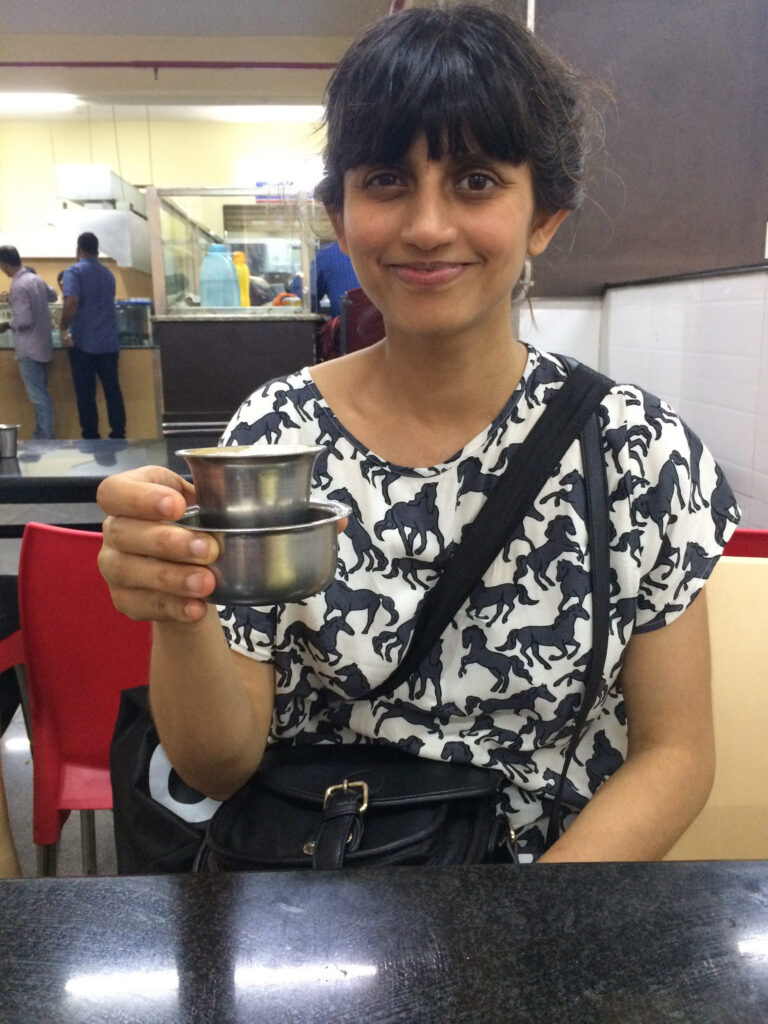Mangalore is a seaside town on the south west coast of India, dotted with tall coconut palm trees, rolling green hills and the Arabian sea. It is one of the most multi-cultural cities in India and arguably the world. A major port city in India since the 6th century, its culture is a rich tapestry of influences from around the world, including the Mughals, Portuguese, Spanish and British. The city boasts several distinct languages, religions, traditions, festivals and cuisines, each with its own unique charm.
Let’s explore Mangalore together.
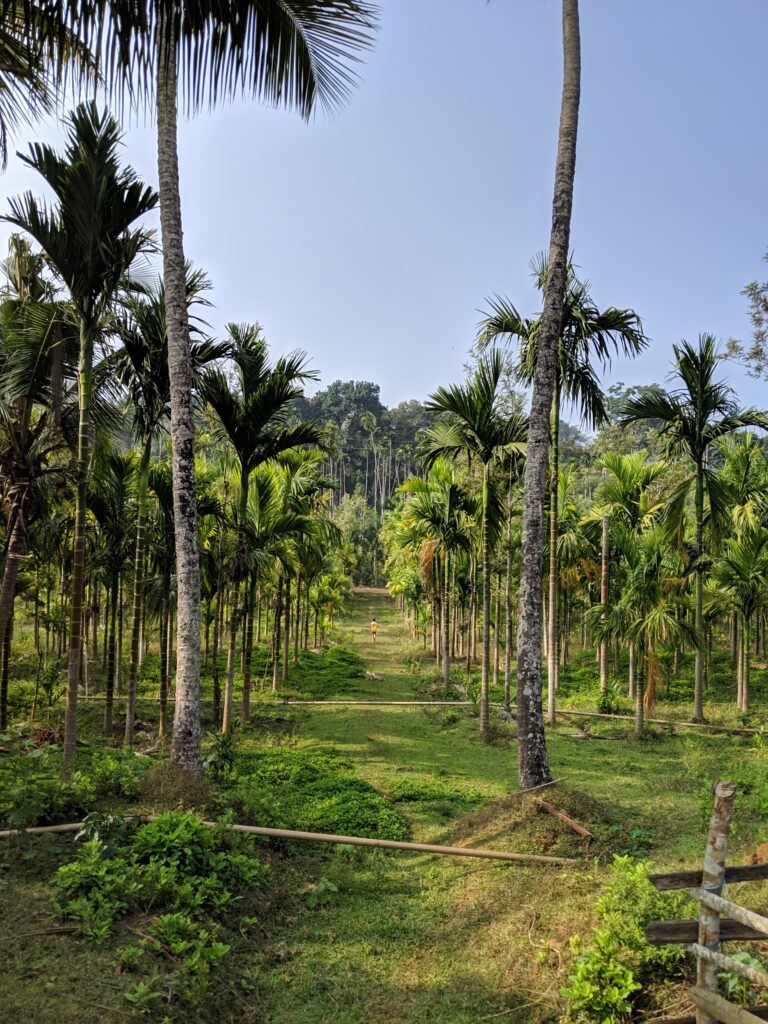
The city is unparalleled in its geographic beauty, situated idyllically between the Western Ghat mountains on one side and the Arabian Sea on the other. It has two major rivers that flow through the north (the Gurupura) and south (the Netravathi) of the city. These rivers form an estuary in Mangalore and ultimately flow into the Arabian Sea.
The beaches are dotted with tall coconut trees, the soil is a beautiful deep red and the mountains are home to aromatic coffee plantations. When you’re standing atop one of the many rolling hills in the city, you’ll see lush green rice fields, tall swaying coconut trees, meandering river waters and the coastal sea line. It is the most beautiful sight to fly into Mangalore and I’m always in awe every time.
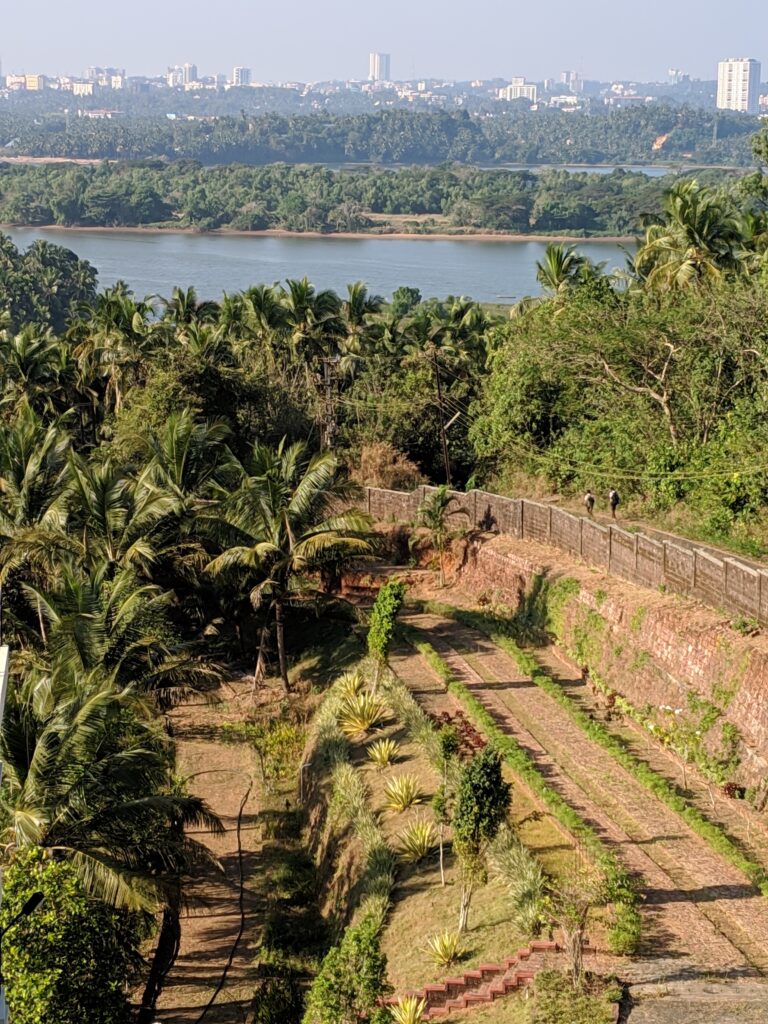
The city is distinctly diverse in its language, culture and traditions because it has been ruled by various cultures including the Mughals, Hindu dynasties, the Portuguese and the British. Consequently, you’ll find many different dance forms, foods, music, customs & traditions all living alongside each other, in peaceful coexistence.
The Yaskhagana is a night-long dance and drama performance, the Pilivesha (tiger dance) is a folk dance performed wearing a tiger costume, and Paddanas are ballad epics passed on through word-of-mouth down the generations.
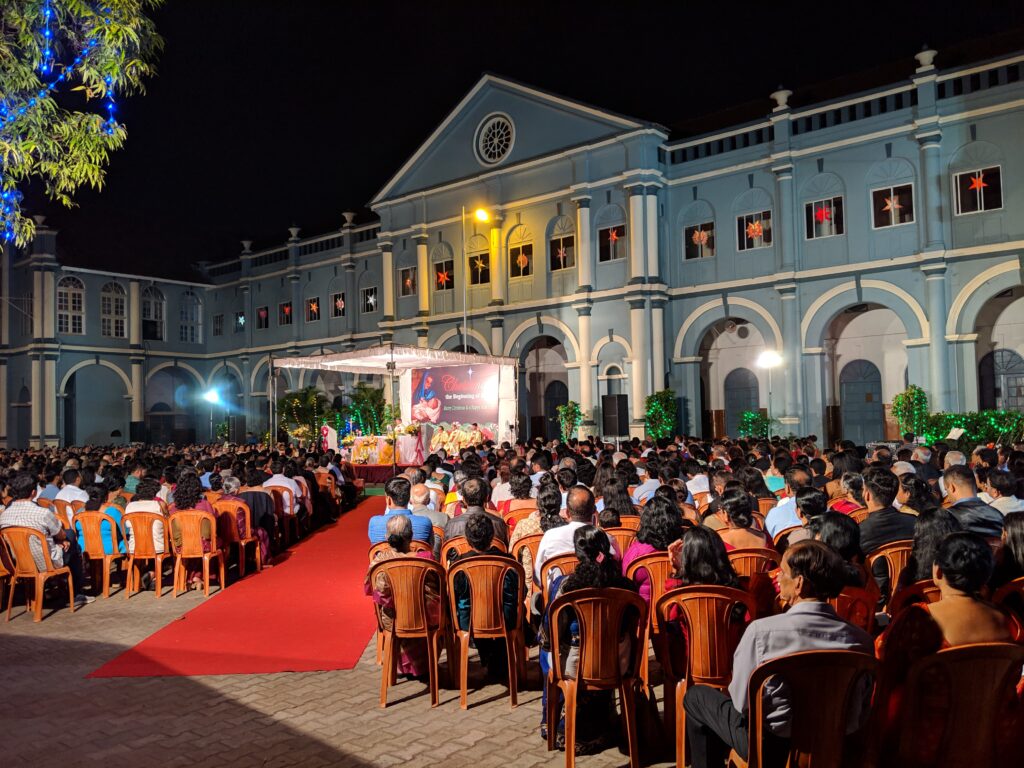
The city has a large European influence, owed in large part to Vasco da Gama’s arrival in the 15th century. He was a Portuguese sailor and explorer. He was followed by several Portuguese traders, merchants and missionaries. Many local Hindus were converted to Catholicism, they were given Portuguese last names and their local traditions, music and culture was influenced by the Portuguese. I belong to this community of Mangalorean Catholics.
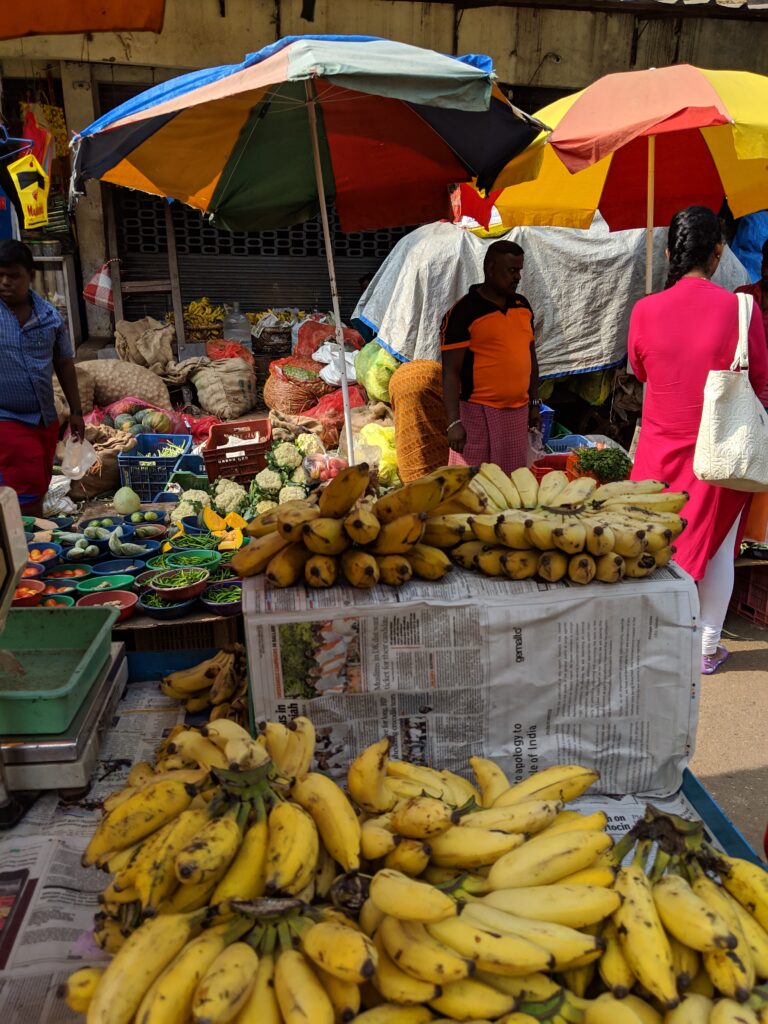
Here are some of my favorite things about Mangalore:
- Endless sunny beaches lined with rows of tall, towering coconut trees.
- Fresh seafood, especially at little hole-in-the-wall restaurants along the beach.
- Warm, sunny weather throughout the year with a cool sea breeze every evening.
- And red clay tiled homes built with stained glass windows, high ceilings and large porticos.
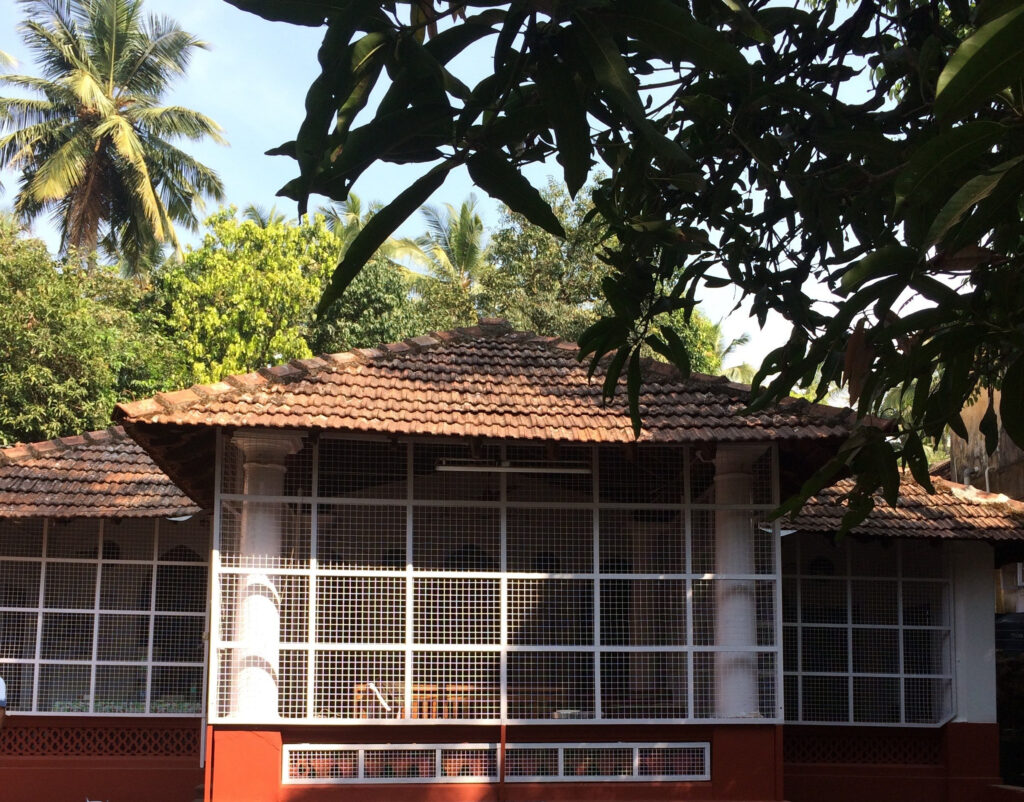
Here are some other things that make Mangalore unique:
- Large European influence, especially Catholic churches, hospitals and schools, like the church you see below, where my parents got married.
- Top notch educational institutions attracting students from all over the world.
- One of India’s major sea trading ports, exporting coffee, cashews and fish.
- Diversity of different religions, languages, traditions and customs.
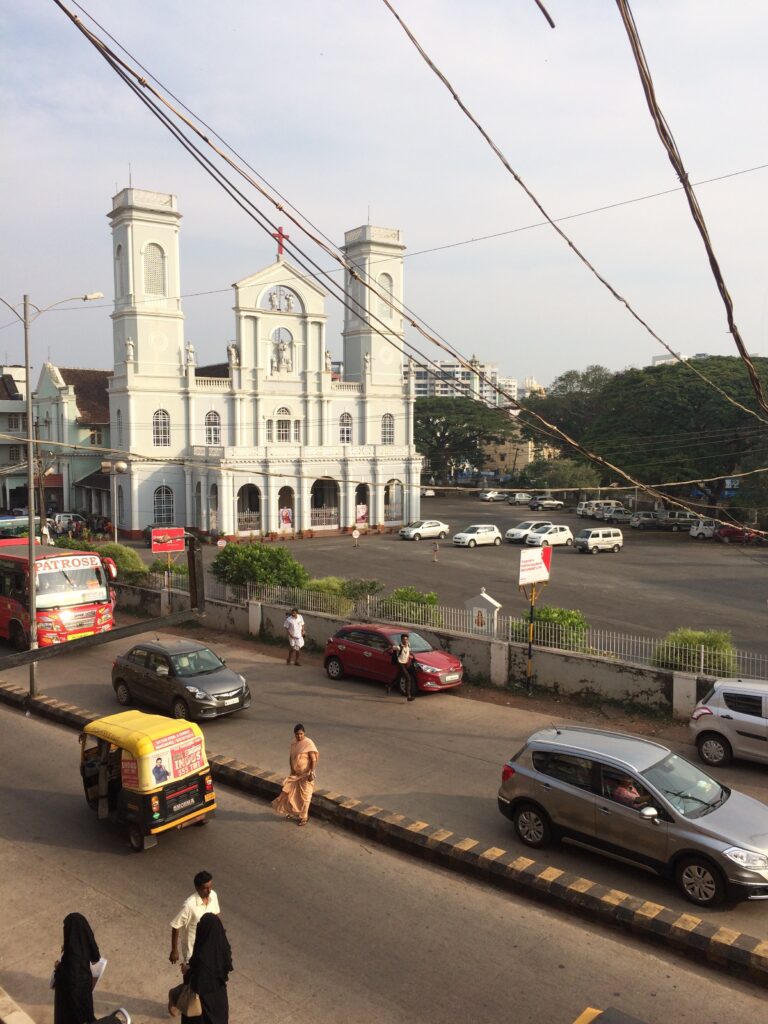
And here are some things I myself recently discovered about Mangalore:
- A German missionary named Hermann Friedrich Mögling moved to Mangalore in the mid-1800s, learned Kannada (a prominent local language) and started the first Kannada language newspaper. He went on to write nearly 36 literary works in Kannada.
- The name Mangalore comes from the word “Mangaladevi”, a Hindu deity. One of Mangalore’s most ancient temples, Sri Mangala Devi temple, is dedicated to this goddess and dates back to the 9th century.
- The St. Aloysius Chapel in Mangalore is adorned with stunning paintings all over the walls and ceiling, painted by Italian Jesuit priest, Antonio Moscheni. It dates back to 1884.
- The Taj Mahal Cafe is one of the oldest cafes in the city, still standing proud at 96 years old. It offers up delicious vegetarian food, but its best kept secret is its filter coffee. I’m having some filter coffee in the picture below.
